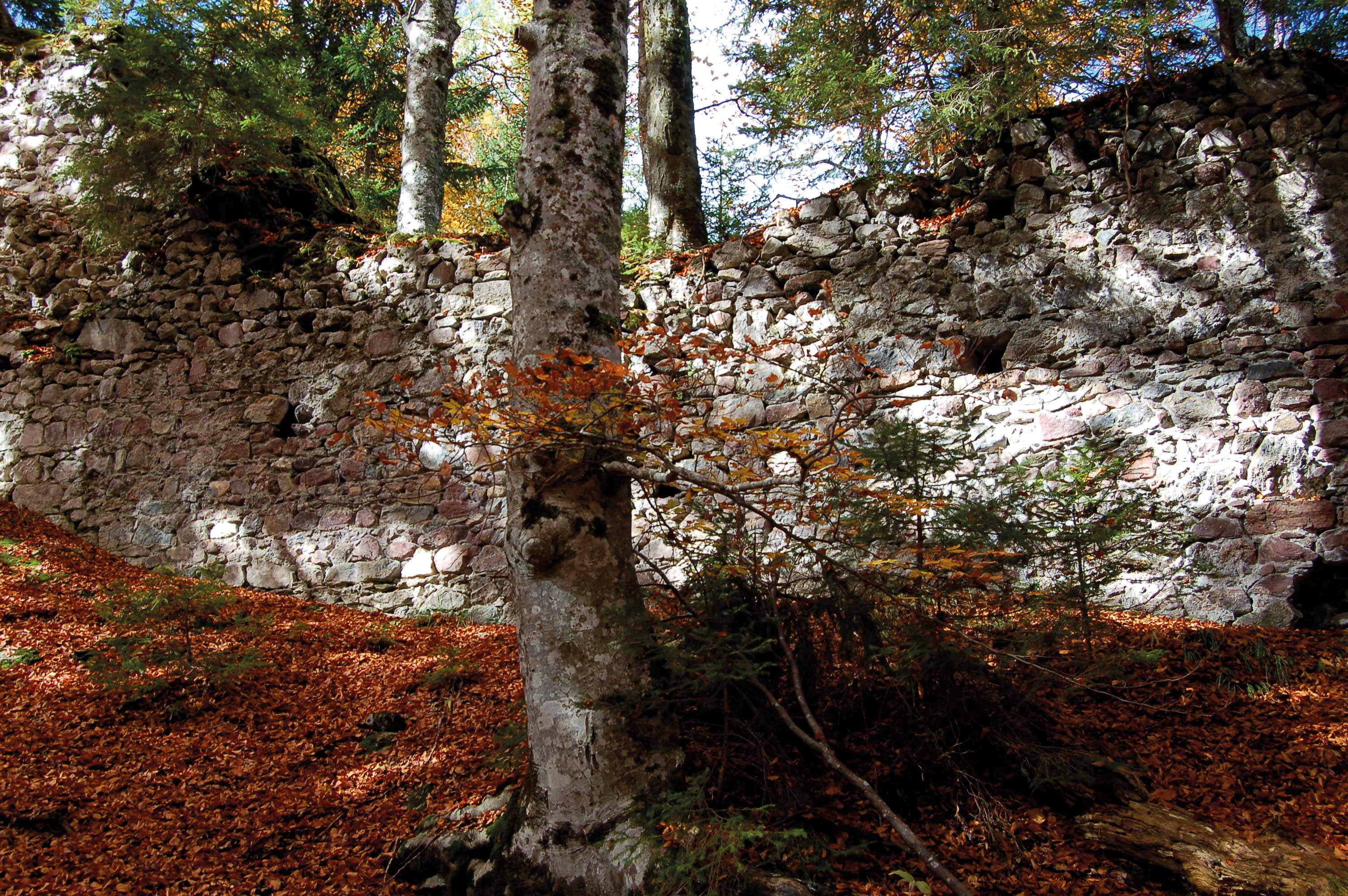Just like everywhere else, people here too had to build wooden and stone buildings to protect themselves against the threats of nature and enemies. By their very nature wooden structures offered less security against enemy attacks, which explains why stone buildings were preferred for fortifications and castles. Of the primary three groups of rocks occurring around Laas (garnet mica schist at the base, limestone on the top and red continental deposits in between), only the last two were used as construction materials and for manufacturing everyday objects. And not just for the castle! They were also used to make house and garden walls, mortars and millstones and even cannonballs for storming the Pittersburg! No use could be found for the mica schist due to its slate-like structure and low level of robustness. The Pittersburg castle was built on a striking limestone ridge. Approximately 245 million years old, it is the youngest rock encountered along the Geotrail. The castle was first documented in 1252. It began to fall into ruins from the 16th century. The ruins of a cistern, keep and outer bailey wall have been preserved.
Cerca
Ultimi Post
- The temporary exhibition “The Wonders of the Underworld – Ampezzo, 20th June 2020
- The Geological Museum in Ampezzo opens next Saturday
- The temporary exhibition “Fossil fish from the Friulian Alps” opens again
- Coronavirus Emergency – extraordinary closing
- Presentation conference – book “INSIDE THE CARNIC ALPS” – Udine, 25th June 2019

